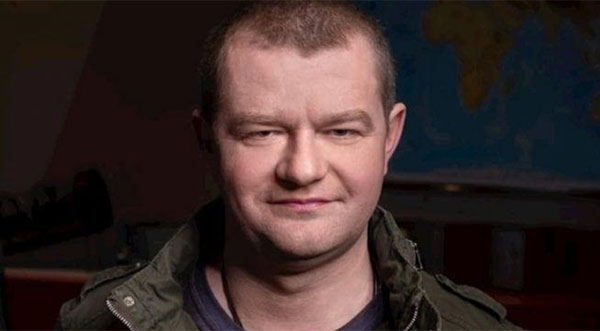Dr. Max Polyakov Reveals Plans to Launch the LEO Agricultural Constellation
By Space Coast Daily // June 16, 2021

Dr. Max Polyakov, EOSDA’s founder, shares the latest plans to launch the LEO Agriculture Constellation during an interview with Via Satellite.
EOSDA (Earth Observation System Data Analytics) intends to use satellite technology to make a difference in agriculture, forestry, disaster recovery, and oil and gas extraction. The mentioned areas of monitoring require new dynamics, such as launching seven optical EOS SAT satellites into LEO (Low Earth Orbit). EOSDA intends to realize this project by 2024.
One of the fundamental objectives of launching a satellite constellation is to aid accurate monitoring of farmlands. Noosphere Ventures managing partner and EOSDA’s founder, Dr. Max Polyakov, shared the details of this significant development with Via Satellite. Here is a recap of the conversation.
How many satellites will be launched? How will the constellation be funded?
According to Dr. Polyakov, at least seven satellites will be launched, with the final size determined by the needed revisit time. Ideally, three days would be enough to revisit the core agricultural regions, but, if required, this time could be reduced to a day by increasing the number of satellites.
Funds can be acquired by partnering with leading market players who wish to co-invest in the constellation. But any investor should be aware of the final product and how it affects target markets. Besides, investors should be willing to provide timely and accurate data about the earth for scientific research and business purposes.
What possible challenges will EOSDA face in the wavering market?
Dr. Polyakov considers the main challenge to be EOSDA’s establishment as a valuable player in the competitive agriculture satellite monitoring industry. Making such progress requires a positive and unmatched reputation while demonstrating EOSDA’s advantages. However, it’s a matter of time before EOSDA makes an impact. The company is working on a vertically integrated ecosystem that will provide profitable solutions for end users.
What about the target clients? Is there any difference between big farming companies and independent farmers?
Mainly, the two differ in terms of scale. Large farmers require satellite technology to monitor the fields remotely, while small farmers use it to optimize resources. Max Polyakov considers three main targets: major local integrators, input suppliers, and farmers.
Local integrators have a substantial presence in the market as they introduce and distribute the latest farming technologies; input suppliers create a comprehensive inventory that covers farmers’ demands. Finally, farmers are the reason why EOSDA’s plans will succeed as they will benefit from the project. They will have accurate forecasting, soil moisture analysis, crop classification, zoning, and irrigation, among other benefits.
What is EOSDA’s competitive advantage over competitors targeting the agricultural sector using LEO constellations?
EOSDA’s primary focus is on optimized parameters that would help solve agricultural problems. For instance, the company intends to use satellites with 11 matrix bands in obtaining biophysical parameters. The market doesn’t have a similar product so far.
What are EOSDA’s long-term ambitions?
While talking about the company’s plans, Dr. Polyakov reckons that EOSDA has set high standards. Expanding the use of satellite data will significantly benefit humanity. In the long run, together with the 12-radar satellite group that is being developed under the EOS SAR project, it will be useful in combating the future scientific challenges humanity might face.











